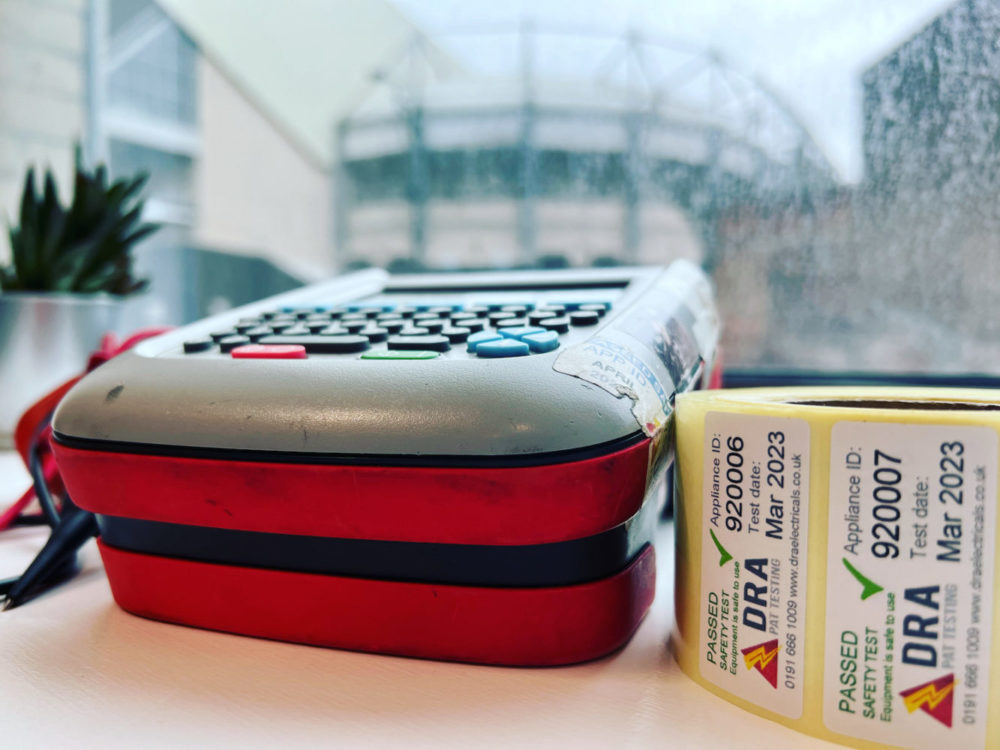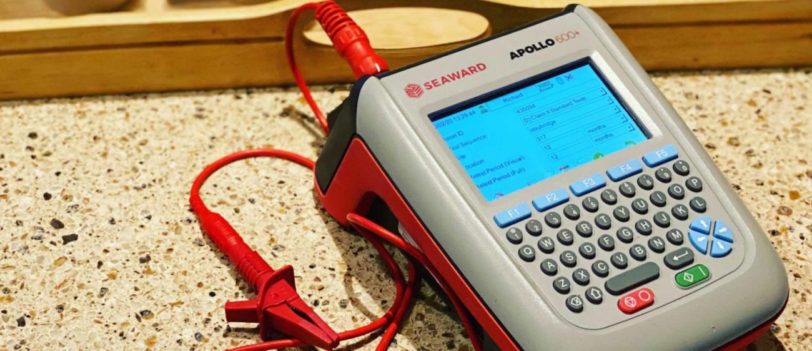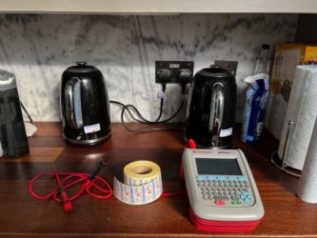PAT Testing for home workers – safety tips
If you need PAT testing and you’re working from home, that’s fine, we can help.
We can wear face masks, and wipe surfaces we have touched; we’ll do what is necessary to keep you covid-secure and electrically safe.
Do you need PAT testing when you work from home?
If you work for a company and they require you to work from home then they are responsible for you, even when you are at home; because you are still working – so the Health and Safety at Work act still applies.
So your employer must get the electrical appliances they provide you with checked to make sure they are safe.
Do you work for yourself, from home?
This question is a lot harder to answer; if only you work in the business and you work from home, if you’re competent to assess that your equipment is safe to use then there is no real reason to get it tested. However, if you employ people or you have clients, and they come to your home to work, then the equipment does need checking.
Maintaining Safe electrics when working at home
We have put together these working from home safety tips to try to help you help your staff work safely, at home
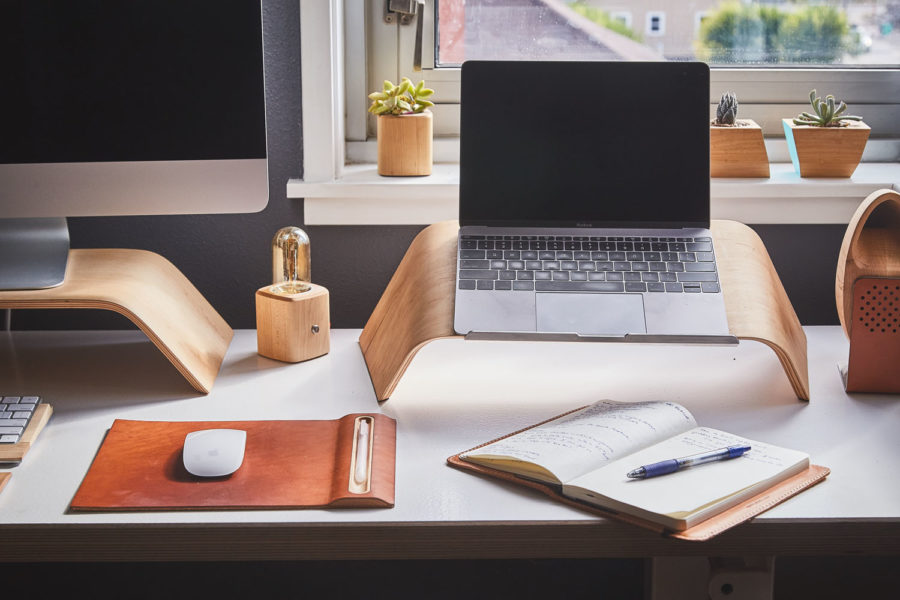
When working from home it is important to maintain safety; when we come home from work we often forget about some of the safety processes we had to follow at work, believing our home is a safer environment – most of the time it isn’t, especially with lapses in concentration.
With the current Covid-19 pandemic more and more people are working from home, which is unprecedented for the way UK business usually works, and we are not set up for it. You’ll have noticed internet speeds are now a lot slower; that’s because a lot more people are using the internet system than it is used to.
Your bosses expect you to work to the same conditions, start and finish times, break times etc that you do in the office but home-working just doesn’t work in that way. In the office you talk to colleagues over your monitor screens, have coffee breaks and generally avoid a lot of work doing other things; most people working in an office do around 4 hours of work a day rather than the 8 they are paid for! But when you work from home, you don’t have the distractions of co-workers so you work harder, smarter and longer. A quick trip to the kitchen for a fresh coffee takes less time, and assuming you don’t have the kids to distract you you’re going to get more work done undisturbed. In fact, being an experienced home-worker I know how many times I have worked through lunch too.
Add to that that you are paying for the electricity, heating, water and internet, unsubsidised by your bosses they need to not expect you to work the full 8 hours… unless they are going to pay you more for that. They’re also saving on the costs of housing you in their office as they did when you were at work.
Companies are realising that their staff working from home are more productive, and set up costs are lower because they don’t have to pay for the desks, lamps, floors and walls.
But where they must not scrimp on, and where many are not living up to their obligations is health and safety. Health and Safety at work applies whether you are in the office or at home; wherever you are working. So these obligations still need meeting. That includes making sure that electrical equipment is safe.
You will also find brining your office home makes for a very different working environment. Some people are setting up shop on their dining room table or trying to find desk space in their garage or shed. If you’re like me then you’re lucky enough to already have an office set up at home, but perhaps you now have to share it.
You’ll find with the increase in electrical equipment in your home you’re forced to add more extension leads, and you’re fighting for sockets which leads to a risk of overloading, which in turn is risking overheating, and fires, which none of us want.
I am seeing pictures on my friends social media channels of their overloaded sockets, as they try to find enough space to plug in their work computer, as well as their TV and games console.
Just because we now work from home, we can’t forget about workplace safety – we are working from home… we are at work, so we are required to comply with the same legal requirements, such as the Electricity at Work Regulations.
We have put together these working from home safety tips to try to help you help your staff work safely, at home.
Portable Appliance Testing for Home-Workers
Working from home is still work so get settled safely
When we all got the nod that we had to work from home we quickly cobbled together a new office in our house, which was put together in a rush and probably is still getting used, as we all moan that its not up to the task.
Now is the time to take a moment and really think about how much better we could set this up. So when you have read this article, shut down your computer and follow these handy safety tips. Actually, open the article on your phone or tablet and follow these guides.
If you’re at work your bosses are responsible for ensuring portable appliances are regularly inspected and tested to make sure they continue to be safe for use and that is no different when you work from home.
In normal circumstances if you were to work from home your bosses would make sure electrical equipment was safe before you took it home; they’d advise you how to check it is still ok when you get it home and they’d arrange for it to be retested at regular intervals; usually every year, by a competent person. Now, with Cold-19 it is no different, expect initially we had a period where we couldn’t come into your home. Now, with a bit of social distancing, good hygiene and some basic PPE, we can. So now is a good time to start petitioning your bosses to get us out to make sure everything is ok.
Portable appliance testing for home workers is important, and it won’t take much effort to organise or do. We can be in and out of your home in a matter of minutes, and you’ll have the peace of mind that your equipment is safe to continue using, and your home office set up is acceptable.
Portable appliance testing for home workers
What does the company risk assessment say?
You may not realise this but your company should have a policy for when staff have to work from home, including a risk assessment. You need to make sure your workers are familiar with this; it should detail safety measures that should be in place, and what they need to do to comply with them, and also what you should do to make sure they understand them.
Chances are with everything that has happened this got forgotten about, perhaps you don’t have a policy at all, or your policy has not been updated to cope with the current situation.
If you have such a policy, make sure it is up to date and send it to your staff. If you don’t and you need help putting it together, get in touch and we’ll connect you with an independent health and safety consultant in your area.
If putting together a risk assessment you need to consider including the following:
- Trip hazards such as rugs and pets
- Spill prevention against coffee cups and breakfast cereal
- Perhaps, make it into a fun activity for your staff to do with their families – they could get the kids to identify any hazards in the home and make a note of the ones that affect work.
We have put together these working from home safety tips to try to help you help your staff work safely, at home.
Use extension leads correctly
Extension leads are intended to only be used with IT equipment, and shouldn’t officially be used as a long term solution. They are intended to be used until proper sockets can be installed, although in reality this rarely happens.
Of course your staff aren’t going to get extra sockets installed but they can still make sure they use the extension lead correctly with a little bit of guidance from you.
The lead being used must be suitable for what it is being used for, and not overloaded, which can lead to overheating and in turn, fires.
The maximum rating of any extension lead for normal use is 13 amp, although most actually are 10 amp, especially the white ones we all have in abundance.
Try to remember that when we get an extension lead, say with 4 sockets, it doesn’t mean it is ok to fill them all; in most cases perhaps only 2 can be utilised. Consider this example: we are using a 4 gang white socket extension with a 10amp rating; if we plug in a PC screen at 3 amps we now just have 7 amps left. Most things we use at home are going to be low power but we still need to consider the ratings. We must ensure the total load is spread across the sockets and not be exceeded. When using the standard office set up of a PC screen and the base unit, putting both of these on an extension lead is perfectly fine. There also shouldn’t be any issues adding a phone charger and desk lamp, utilising all 4 sockets in this case.
But never ever plug a heater or your hair dryer into the same extension!
Also, if you are using a cable reel be aware that if it is still coiled up it’s rating is a lot lower than if it were uncoiled – check the label on the sockets for the difference.
Finally, think of those square blocks that you plug in to sockets – put them in the bin! Especially the ones that don’t have a fuse holder as they are noncompliant and can be very dangerous. These are well known to lead to fires if overloaded.
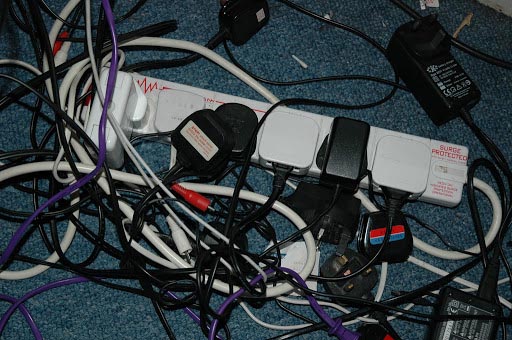
Visually inspect equipment before use
When we are at home we forget about safety; many people seem to think the risks at work are not at home. Damaged or faulty equipment poses just as much risk at home as it does at work, so inspect appliances before use to reduce the risk.
Because of the rush of setting up working from home in this crisis many of us forgot about the importance of working safely. In normal circumstances had we moved electrical equipment like a computer from one location to another we’d have considered the risk of damage occurring and got it PAT tested before it was plugged in. But because we all rushed to work from home this got forgotten about.
We had a couple of clients tested the equipment before it left the office, although they couldn’t guarantee it was still safe when it got to their employee’s home, they were sure it was safe when it left, so they protected them selves there.
It is important that we verify as much as possible that everything is safe for use and doesn’t present a danger to users, and the users family.
The best way to make sure all this equipment is safe is to get it PAT tested and if that is possible we would recommend that be done. Whilst we’re not keen on going into houses to do this, if we can guarantee protective measures are implemented this could be an option. Speak to us about this.
Whether we get the PAT test done or not it is still important that the user checks their appliances regularly just in case. A regular user check, say every week, will help us to reduce the risks by picking up on any issues before they become major.
These visual inspections by the user should be carried out before plugging everything in (probably too late now), or unplug everything now and check it before plugging it back in. If the user is unsure about something they need to report it to you.
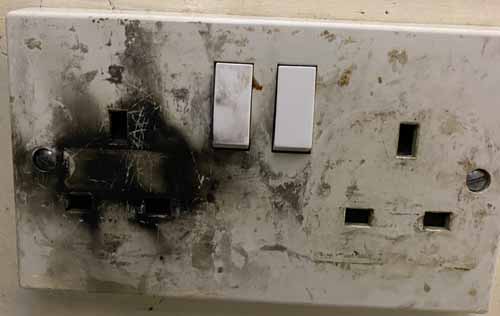
The inspection should include the following:
- Is the plug in tact and not damaged in any way?
- Is the cable fitted to the plug securely?
- Are there any bare wires, or coloured insulation showing?
- Is there any damage to the cable such as cuts, tears, bare wires etc?
- Does the cable enter the appliance neatly, and is it secure?
- Is the appliance casing damaged in any way?
- Does the appliance have a correctly functioning switch?
- Are all guards, and parts in place and secure?
- Does it have correct stands if necessary, so it doesn’t topple over
The visual inspection by the user is a check of the plug, lead and appliance using common sense. If it looks dangerous don’t use it. Report it to the right person and get it repaired by a competent person.
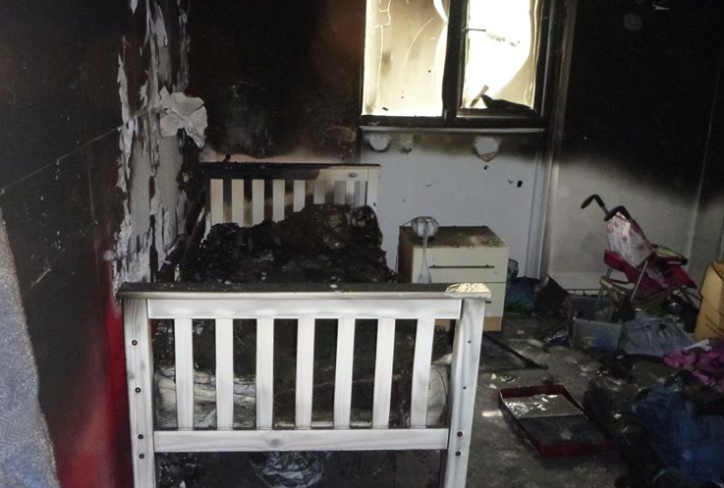
Is the appliance genuine or fake?
A concern we have centres around whether an appliance is genuine or a cheap counterfeit alternative. Putting together the right equipment for our home offices, in a rush, may have lead to us buying equipment from less scrupulous suppliers. If the iPhone charger we’re using was bought off a market stall how do we know it isn’t going to blow up?
Fake or counterfeit equipment rarely meets British standards, and may not have the right safety measures built in. Such appliances pose a massive risk to our homes and workplaces. We see regularly damaged appliances and via our friends at Tyne and Wear Fire Brigade, we see the results of using fake goods.
Some of the biggest issues are caused by phone and laptop chargers; make sure yours are from the same manufacturer as the appliance they charge, and are the recommended versions. If you buy cheap alternatives, your are risking your home and your family.
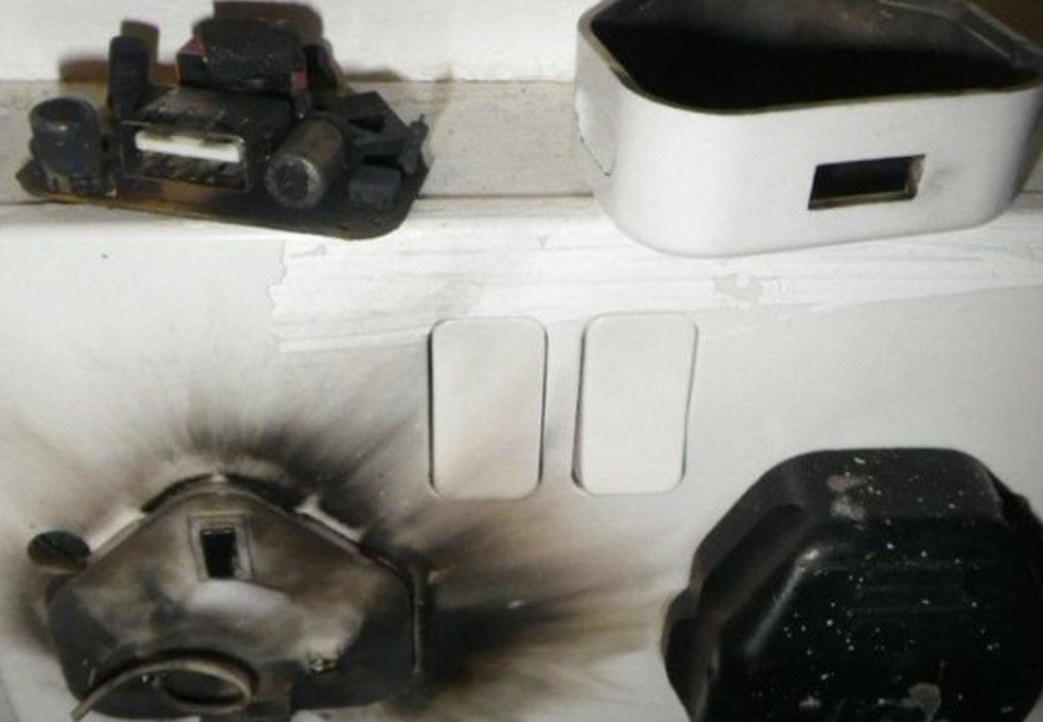
Moving equipment risks damages
Your office is now in someone’s house
From a business perspective, sending staff to work at home doesn’t mean you can forget about them – they’re using electrical equipment you have provided which means you are still responsible for ensuring it is safe. It should have been tested before it left the office, was it? Doubt it. We only had 2 clients that we know of that took this sensible precaution.
Of course, with the threat of Covid-19 the chances of an electrician or PAT tester going into someones house to test equipment, now, is slim – we aren’t doing any domestic work – so you need to rely on your staff using their appliances sensibly – making sure they don’t overload extensions, and that they do their own visual inspections.
Did you provide proper surge protected extension blocks suitable for the equipment they’ll be using at home?
If you’re planning to keep staff working from home long term, after we’re allowed to return to work, you need to get equipment tested sooner rather than later, for your own peace of mind, which is going to increase costs, as now equipment will be tested over multiple sites, but you have saved quite a bit whilst you’ve not had to pay the energy bills.
Have you taken that into consideration for your staff working from home?
They are no longer using your electricity, but their own, so should you be paying towards that? I’ve heard of some companies, accepting their staff will work less time in the day due to distractions at home, but as long as the work is done they accept that, so they don’t have to cover the additional expenses such as electricity, gas, water, etc.
Are you wasting money on energy?
Have you turned off everything that is still in the office by the way?
A computer still switched on, a photocopier or TV will be using energy – what’s the point if you’re not there. Save some money by popping back in to make sure everything is turned off at the wall.
When staff start coming back to the office, you need to consider getting equipment tested before they start using it at work again – appliances can be damaged in transit, in fact they are at their highest risk when getting moved from one place to another, and you don’t want to risk plugging in a damaged computer that could start a fire.
You also want to make sure each appliance is cleaned, to get rid of any lingering germs.

